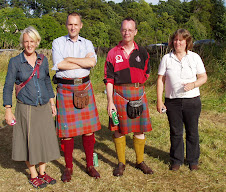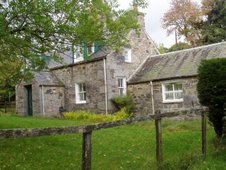Onwards! I’ve reached row 83 of the border pattern of Mrs
Hunter’s shawl – even if I add a break-pattern round, I should be able to embark on
the centre before the month is out. I feel that I’ll whip along, once there, only 141
stitches to the row instead of 500+ (it was 700+ at the beginning). On the other hand, there are 282 rows to do, instead of only 86. We shall see.
Judith, that’s an excellent idea, to send Baa Ram Ewe an
email about the shorter Ancasta, before the day. I’ll hold off for the moment. I’ve still got a month to think about possible extravagances and zero in on a
couple. I’m happy to report that there’s a thread in the EYF Ravelry group in
which folk are showing off their 2016 EYF stash. I could join in on that one.
At least I’ve knit some of it.
There’s an interesting paragraph in VK about a project at
the Shetland Museum looking at lace patterns described as “Shetland” in the 19th
century and suggesting that genuine handmade knitted lace from Shetland inspired
machine-made “Shetland lace” from Nottingham. Which wouldn’t be entirely
surprising. One thinks of that quite cheap, machine-made shawl in which the
Cambridges first displayed Prince George to the world.
Here’s
the link, but it adds little to the paragraph in VK except for a
tantalizing reference to a recent PhD thesis by one of the prime movers of the
project: “The History of the Fine Lace Knitting Industry in Nineteenth and
Early Twentieth Century Shetland”. I looked it up, and most of it is unavailable
online because of copyright. The abstract – which is available – suggests that
it might be too sociological and women’s-history for my taste, but I’d still
very much like to see it as long as I didn’t have to move from my desk.
What I’d like to know is – why Unst? Obviously, there’s no
answer – but are there lingering memories there of why that island, the most
northerly part of the British Isles (not counting Muckle Flugga), became the
epicentre of fine lace knitting? And my other question is, how did they manage
in the winter? Lace knitting would have been virtually impossible from November
through February before electricity, Fair Isle not much easier. How was it
done?
Maybe I could ask Hazel Tindall!
Non-knit
Greek Helen called in this evening. She says she has two
mosaic commissions on the bubble: they have survived the initial-approach
stage, to which she replies with ideas and a quote. Mosaic-making, like
knitting, makes heavy demands on Man’s Time, and interested clients have been
known to fall away when they hear how much it is going to cost. She thinks
maybe an Edinburgh address inspires more confidence than her previous Athenian
one. Could be.




The link that you gave referenced the conference at the Shetland Museum at which the writer of the thesis presented her research. I remember listening to her talk. She seemed to have done her research from period newspaper adverts which used the term Shetland as a suggestion of quality and even spoke of "Genuine Shetland" when the items were all produced in Nottingham.
ReplyDeleteIt looks as though the links should still be there to view the video of the various talks, but I could not get it to open.
I tried unsuccessfully to get the videos to open, following Shandy's suggestion. I wonder if they are housed somewhere online.
ReplyDeleteThe coding behind the player suggests the videos are on YouTube, so with a bit of Google-Fu I found them. This link should work for part 1 and include links for the rest:
ReplyDeletehttps://www.youtube.com/watch?v=xQPmUvtLbIk&list=PLrc6SIMzopv-QOEO5AuFxlfQWElLOA5FZ&index=32
Here's a shorter version of the same link:
http://ow.ly/19S2308rNkw